The next in my write ups on the top publics in Indiana
Coyote Crossing clocks in at just over 6,800 yards from the tips, but it provides more than enough strategic challenge for most of the golfing public. With the use of the terrain and a natural series of run-offs from the Wabash River in play, the course has some excellent natural features. Irwin routed the course in two loops that run through the landforms and make use of the natural water in an efficient manner. One of the things that Irwin did that will please most golfers is he only routed two par fours over 450 yards, something that is becoming all too familiar on modern layouts.
No one will be amazed by the green complexes that Irwin constructed, but all of them have some subtle contouring that impacts the play on the hole, such as the thumbprint green on the third hole. They also are exemplary of the architect blending the complex into the existing terrain, as was done on the fourth hole.
Note the thumbprint in the front of the third green.
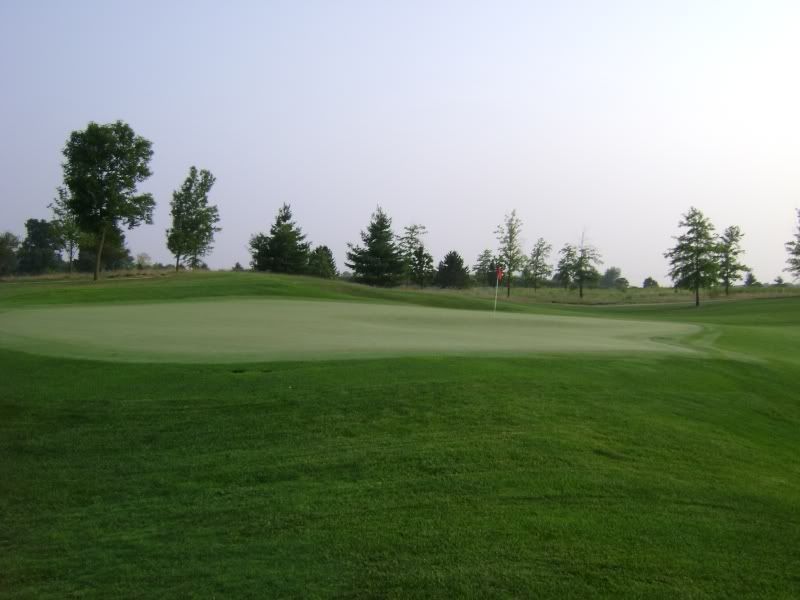
The economical use of sand bunkers is also appreciated as two holes do not even make use of that particular hazard and less than fifty in total are found around the course. In most instances the use of angled greens and one bunker provide the strategic challenge on each hole and are often placed along the center line of the hole. Irwin supplemented this with carries over the streams on five holes to provide some teeth and heroic elements to his design. The few ponds that are used run between holes and only impact shots way off line. All of these design elements are in place and create several holes that appear to play straight off the tee but in fact require a slight bend in the hole and some excellent shotmaking, a hallmark of Irwins career.
Holes of note:
Hole 2 552 yards A double dogleg par five that works around a bunker cluster on the tee shot and a small pond and pot bunker on the approach. The green is one of the smallest on the course and a well controlled pitch is the only option into the green or the player will be in either the sand short of the bunker that is hidden long.
The approach to the small second green.
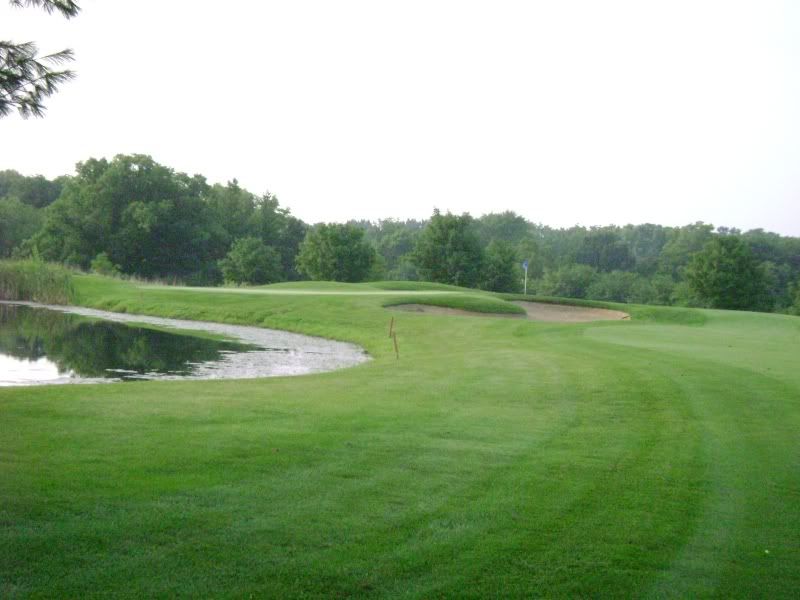
Hole 4 426 yards - A downhill hole with a fairway that runs from left to right with the natural grade of the terrain helping the player to get into ideal position with their approach over the center line bunker thirty yards short of the green.
From behind the green, note the downhill nature, the slope from the right side (left from the tee) and the bunker bleeding into the line of play short of the green (rough short of green).
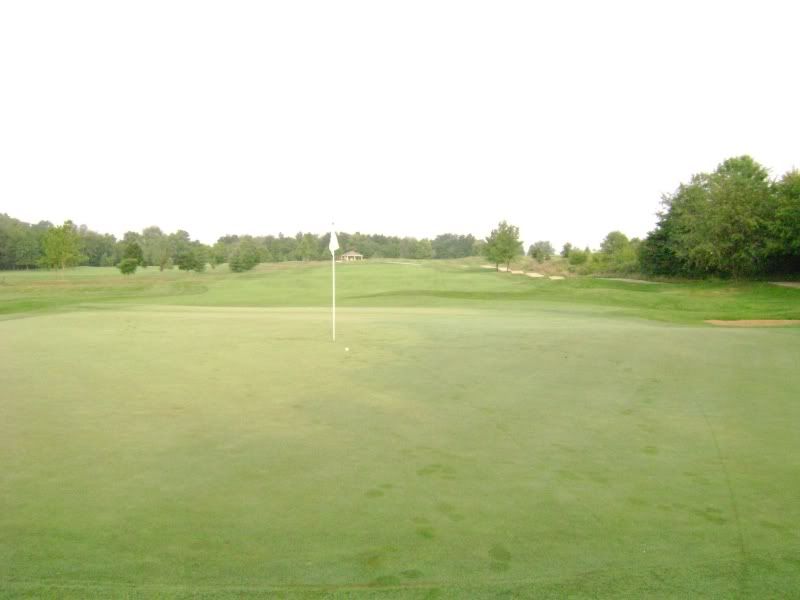
Hole 5 217 yards - Then Coyote Crossing reveals something new on the fifth, some rugged terrain that Irwin seems to make the most of in a common fashion during the round. He traverses a stream with a par three, this one totaling over 200 yards from the back markers and downhill. The large green terrorizes the player from the tee with trees seemingly cutting into the line of play on the right and squeezing more than the chute for the shot. What one finds at the bottom is nothing more than the largest green on the course that seems to run off of a center spine and towards the front edges.
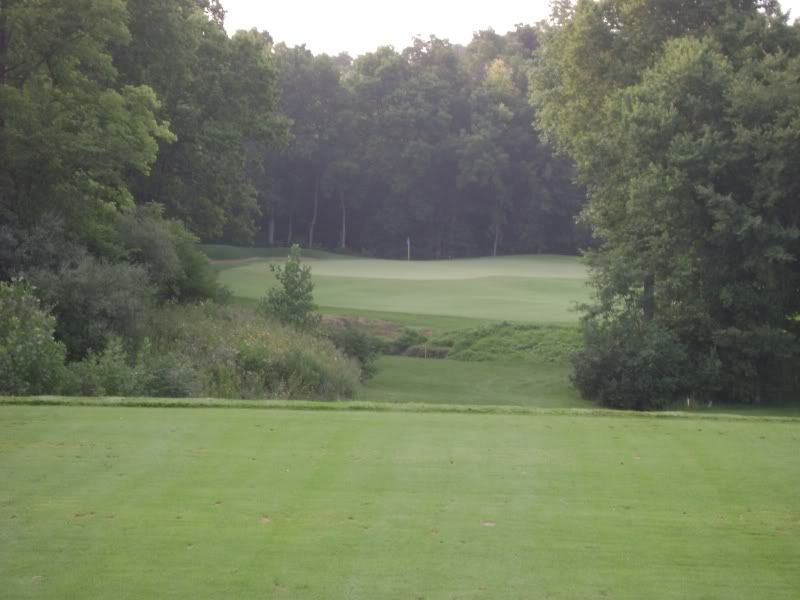
Hole 7 352 yards - The seventh is a fine short par four that doglegs over a bunker at the corner and along the path of a stream that must be cleared on the tee shot.
The 2nd shot
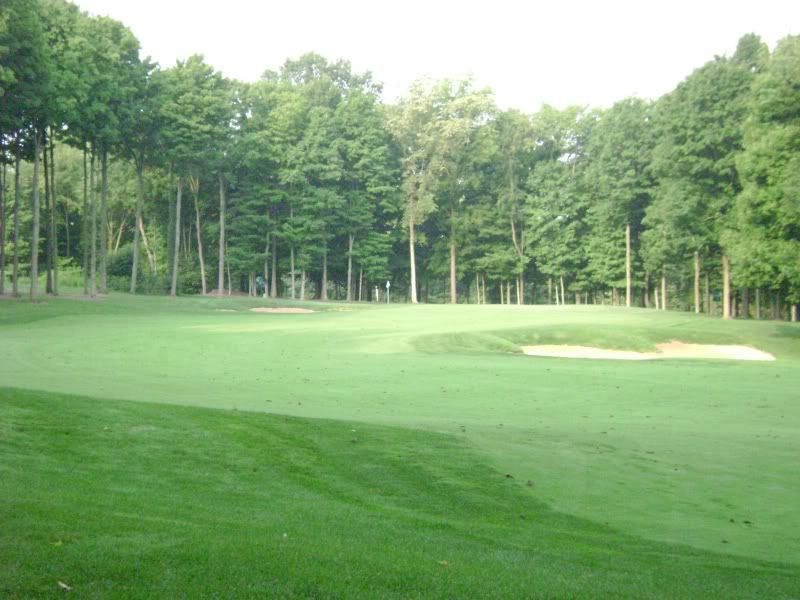
Hole 8 179 yards - The eighth then runs downhill again crossing over the water hazard to an angled green that features no sand bunkers.
From the tee
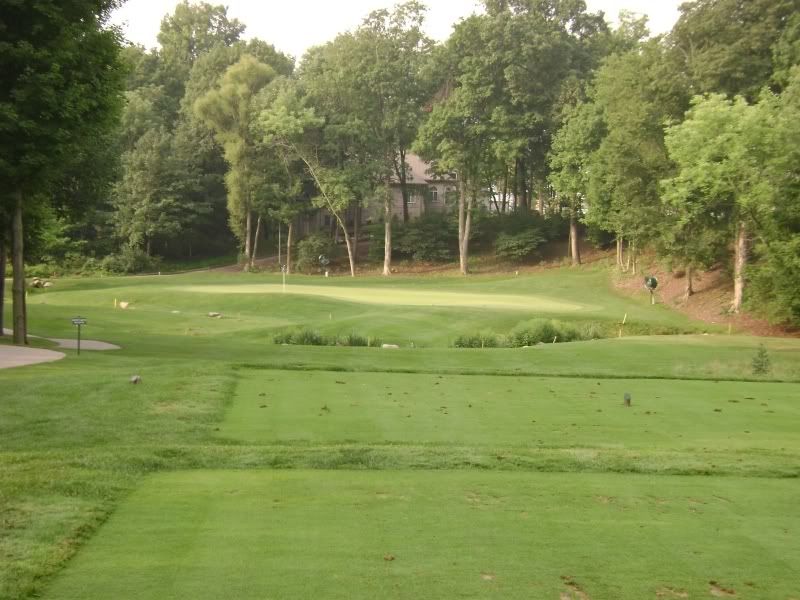
Hole 9 530 yards - Irwin also provides another downhill tee shot on the risk-reward par five with a stream bisecting the fairway and a pond protecting the approach into the green complex, accompanied by a group of four bunkers.
From behind you see the narrow entrance into the green with water in play.

Hole 10 401 yards - The tenth is perhaps the best architectural hole on the course as the fairway disappears below with a hill biting into the hole from the right and the green appearing in the distance. At only 400 yards from the back, this hole is not a destroyer of scorecards but it is just a beautiful example of using the natural terrain to form a hole. The green is built into a plateau at the base of the hill behind the green with one bunker protecting front left and the stream cutting into the fairway.
The tee shot with the green just visible in the distance
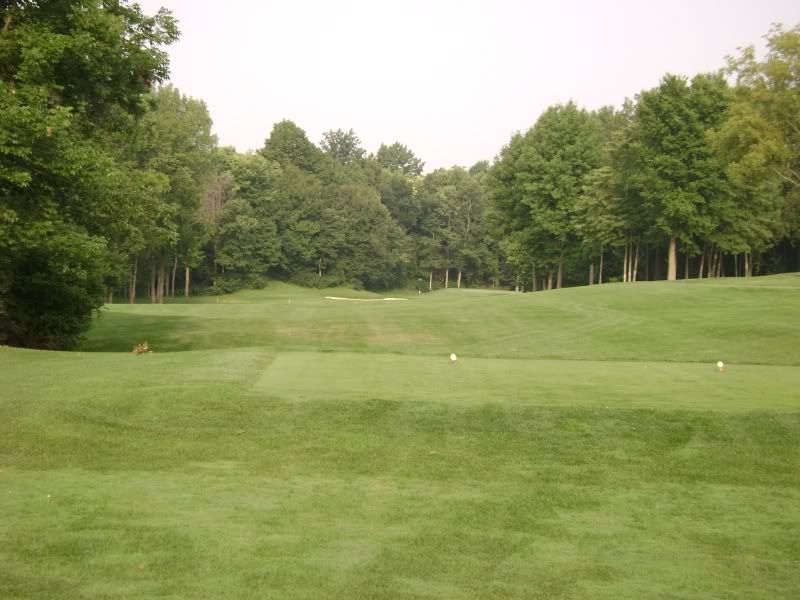
The approach
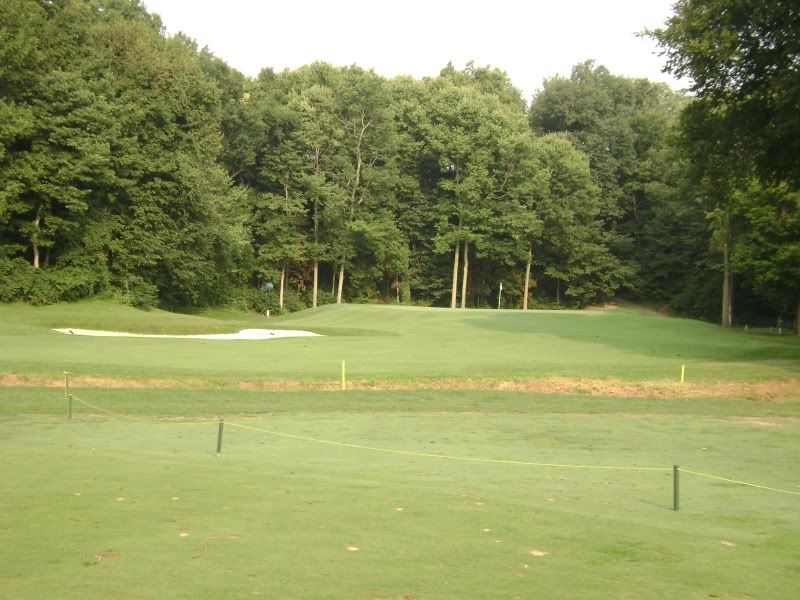
Hole 11 322 yards - Following this is a hole with a large island landing zone and a green perched just on the other side of the creek coming back into play.
The approach
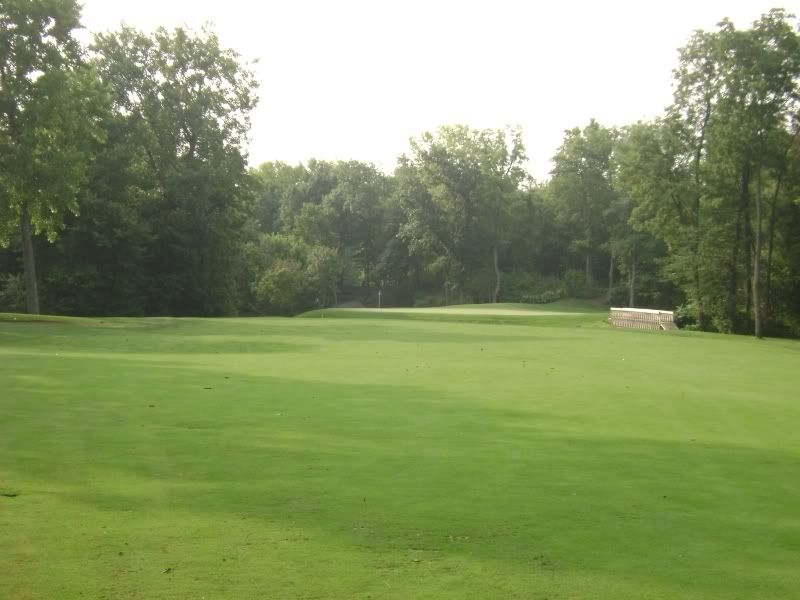
The 12th - 537 yards - The tee shot must deal with the bunkers on the left and then hug this side of the hole to have an easy approach into the narrow green protected by a long pot on the right side.

Hole 15 531 yards - The fifteenth is another risk-reward par five with water along the left side of the hole all the way to the green. The less daring angle of approach is into the green that runs hard towards the water.
The approach is difficult from the left with the water cutting into the hole.
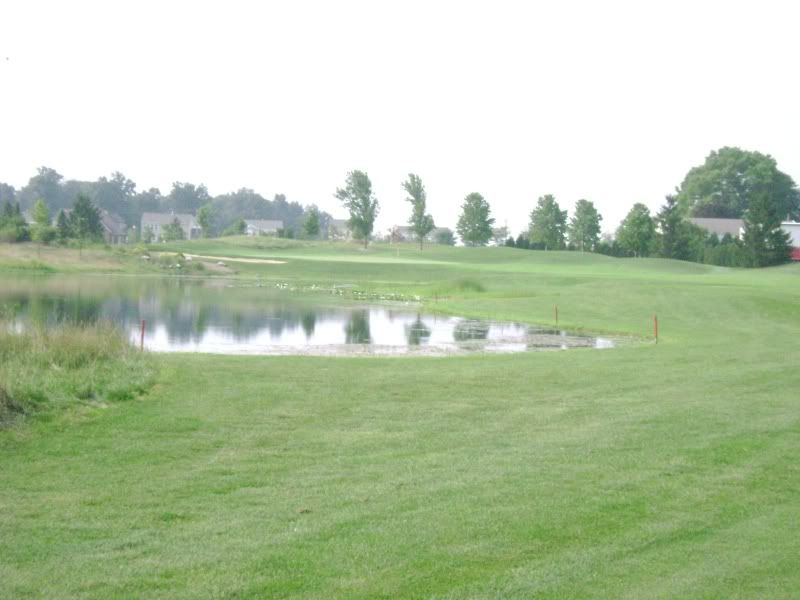
Hole 16 451 yards - The sixteenth is longest par four on the back side and features another example of wonderful terrain movement framing the hole. The entire hole runs from right to left with the green placed in a hollow at the base of the slope with trees ringing the green on the right side.
From the tee you can see the movement of the terrain from the right.
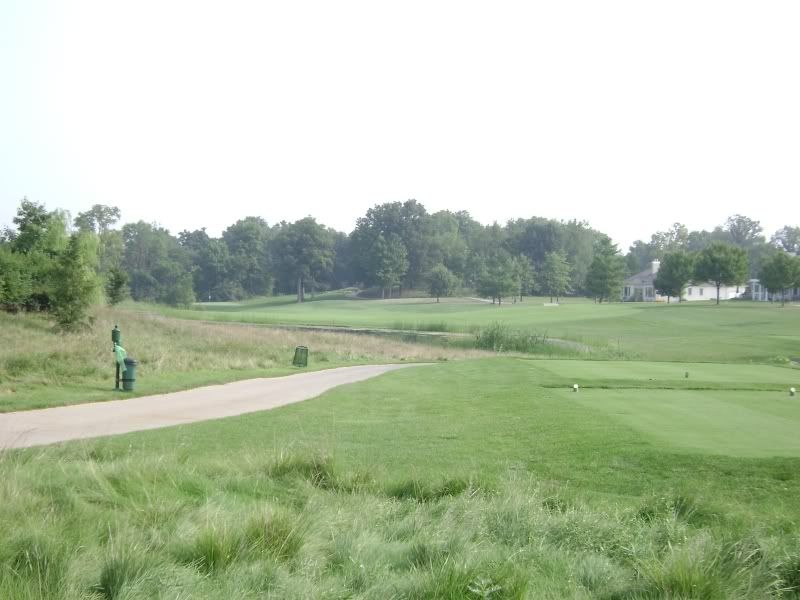
The hill on the left side of this picture is in play if you push your tee shot
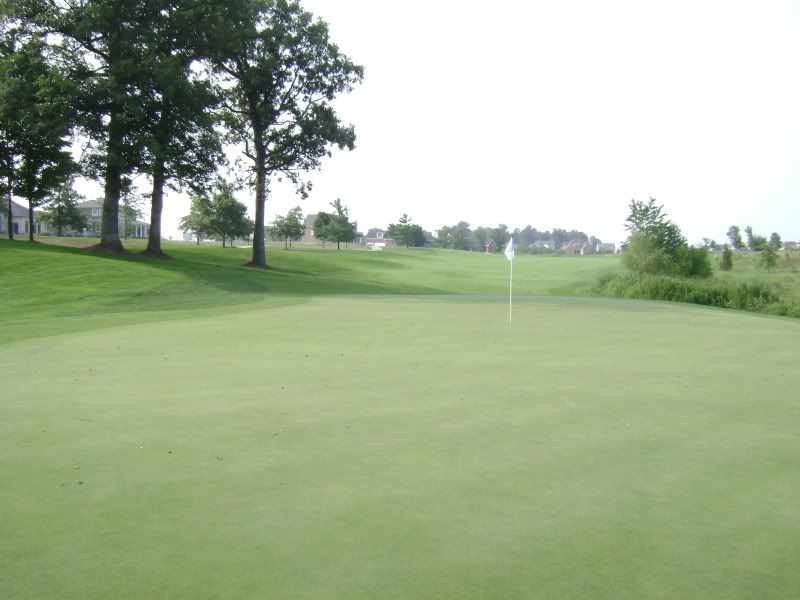
Hole 17 - Again Irwin traverses a difficult part of the landscape with a par three on the penultimate hole that looks much longer than it actually plays across a valley.
The tee shot
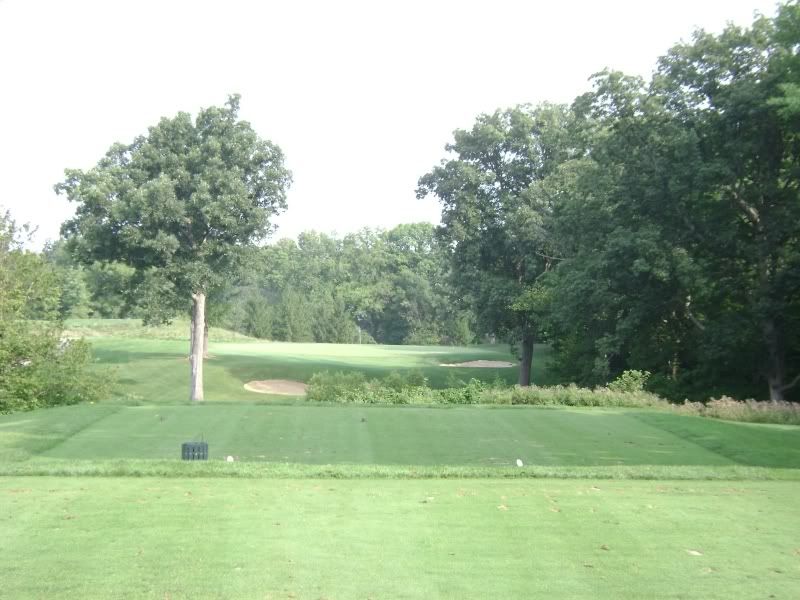
The best thing about Coyote Crossing is the extremely great value it presents as it can be played for under $50 every day of the week. It is entirely walkable and encourages such practices if at all possible. The location of the course does limit it to visibility from all but those in the Lafayette area, but that may soon change as the course has been recognized as the top public course in the state of Indiana in the past and as the Course of the Year by the National Golf Course Owners Association in 2005. The course does a good job of combining the strategic elements of design with natural land movement within a beautiful setting. It takes the best elements of courses like Bear Slide, the Warren Course and Covered Bridge into one course. No wonder it sits in my personal top five for public courses in the state.